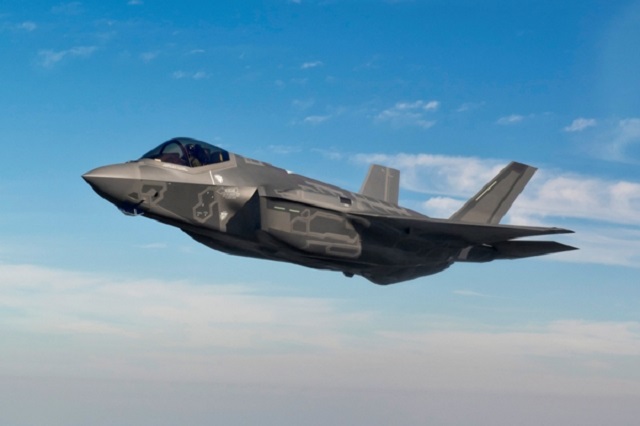As Canada heads to the polls on Monday, Lockheed Martin F-35 backers will be quietly hoping for a conservative win after Liberal Party leader Justin Trudeau came out against the troubled fighter programme in favour of more spending on ships.
Despite putting the acquisition on hold in 2012, the ruling Conservative Party says it would push forward with the project should it win on 19 October, with leader Stephen Harper saying to exit the programme would “crater” the local aerospace industry and miss out on billions of dollars-worth of future contracts.
Polling posted by CBC News this week shows a tightly contested three-way race, with the Liberals pulling ahead at 35.6% against the Conservatives (30.4%) and New Democrats (23.8%).
Canada’s F-35 purchase is by no means a key election issues, but it is certainly crunch time for a decision on how best to replace the nation’s 77 aging Boeing CF-18A/B Hornet. Strong alternatives include the Boeing F/A-18E/F Super Hornet (which desperately needs new orders to continue production) as well as the Eurofighter Typhoon, Dassault Rafale and Saab Gripen.
Industrial participation has been central to the debate over whether Canada should buy the F-35, and it’s also a conundrum also faced by other long-time programme partners like Denmark, which has also been reassessing its purchase.
It is timely that Vancouver-based Avcorp announced a new contract with Lockheed this week for F-35 outboard wing assemblies for carrier-variant F-35s, with deliveries starting “in the second quarter 2016 and first deliveries in the third quarter”, the company said 15 October.
The deal adds to Avcorp’s existing work with BAE Systems, which has been buying outboard wing assemblies from Avcorp since 2011. Avcorp is just one of many Canadian aerospace firms to share in more than $637 million in contracts to support the F-35, according to Industry Canada.

Lockheed Martin
One must also take cost and capability into account, with a Canadian government assessment published in 2014 rating the main four options on the market as roughly equal when performing standard missions like defence of Canadian airspace and counterterrorism beyond 2030 – except for state-on-state warfare, where the F-35A is designed to excel.
On cost, the US government is paying about $100 million per A-model F-35, whereas a new Boeing F/A-18 Super Hornet costs approximately $60 million, according the US Navy.
Lockheed Martin and Pentagon officials said at the unveiling of Norway’s first F-35 last month that Canadian firms will continue to support the project irrespective of outcome of the fighter selection, but certainly those firms would be at a disadvantage when competing for new business.
“We still think the F-35 is the right choice for Canada," Lockheed F-35 programme manager Lorraine Martin said in Fort Worth, Texas, where the F-35 is assembled. “They’re still a formal member of this programme and participate in all the partner meetings, so they get a vote as the partnership goes forward, but when they buy aircraft we’ll put a detailed plan in place for them."
Canada’s participation in the Joint Strike Fighter effort dates back to 1997, and the country’s industrial participation plan firmed up in 2006 when initial product began. The aircraft was formally selected to replace the CF-18 in 2010.
Trudeau says under a Liberal government, Canada would hit the reset button and hold a fighter competition with the F-35 excluded. “We will not buy the F-35 fighter jet,” he says.
Source: FlightGlobal.com























